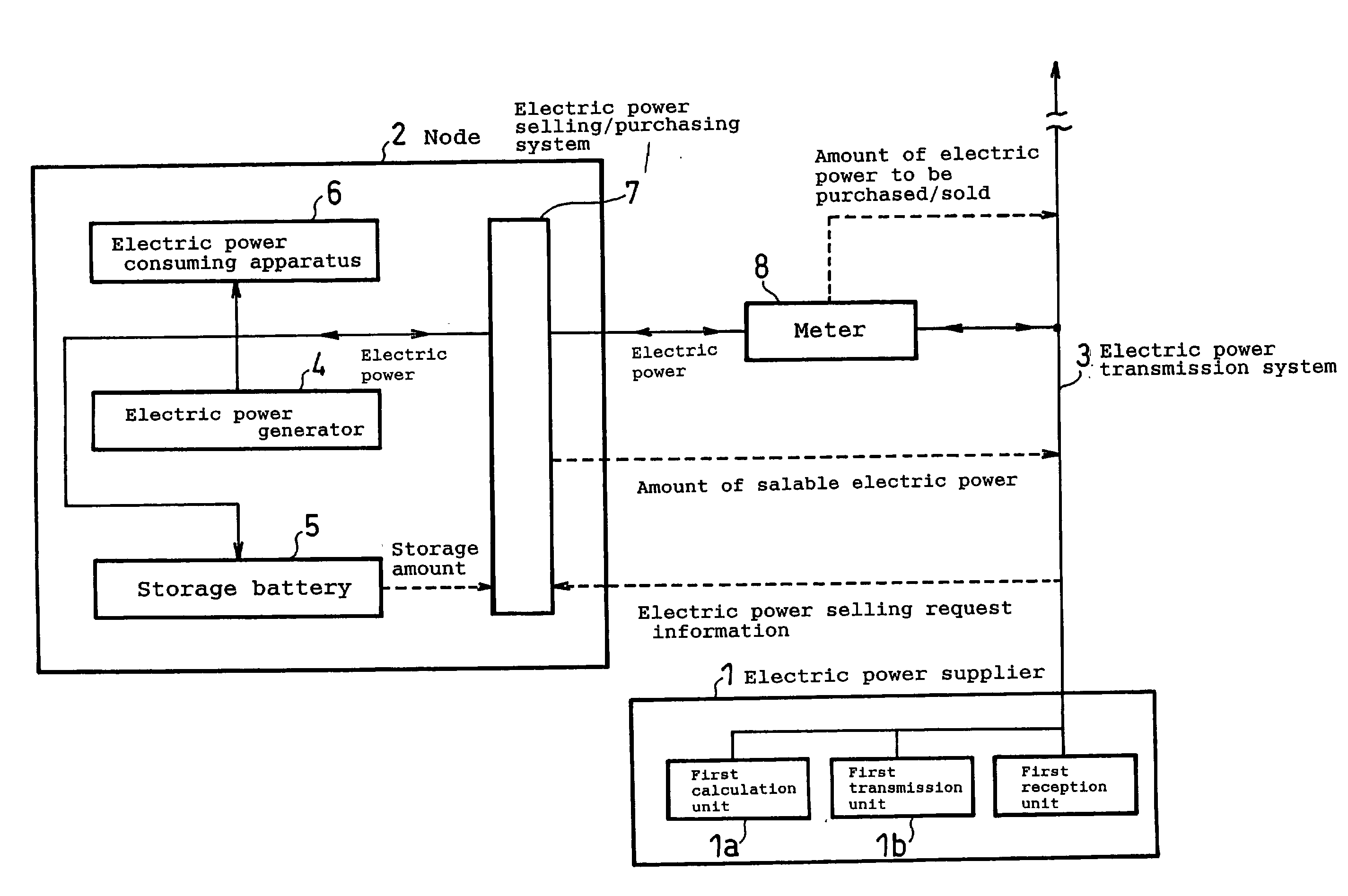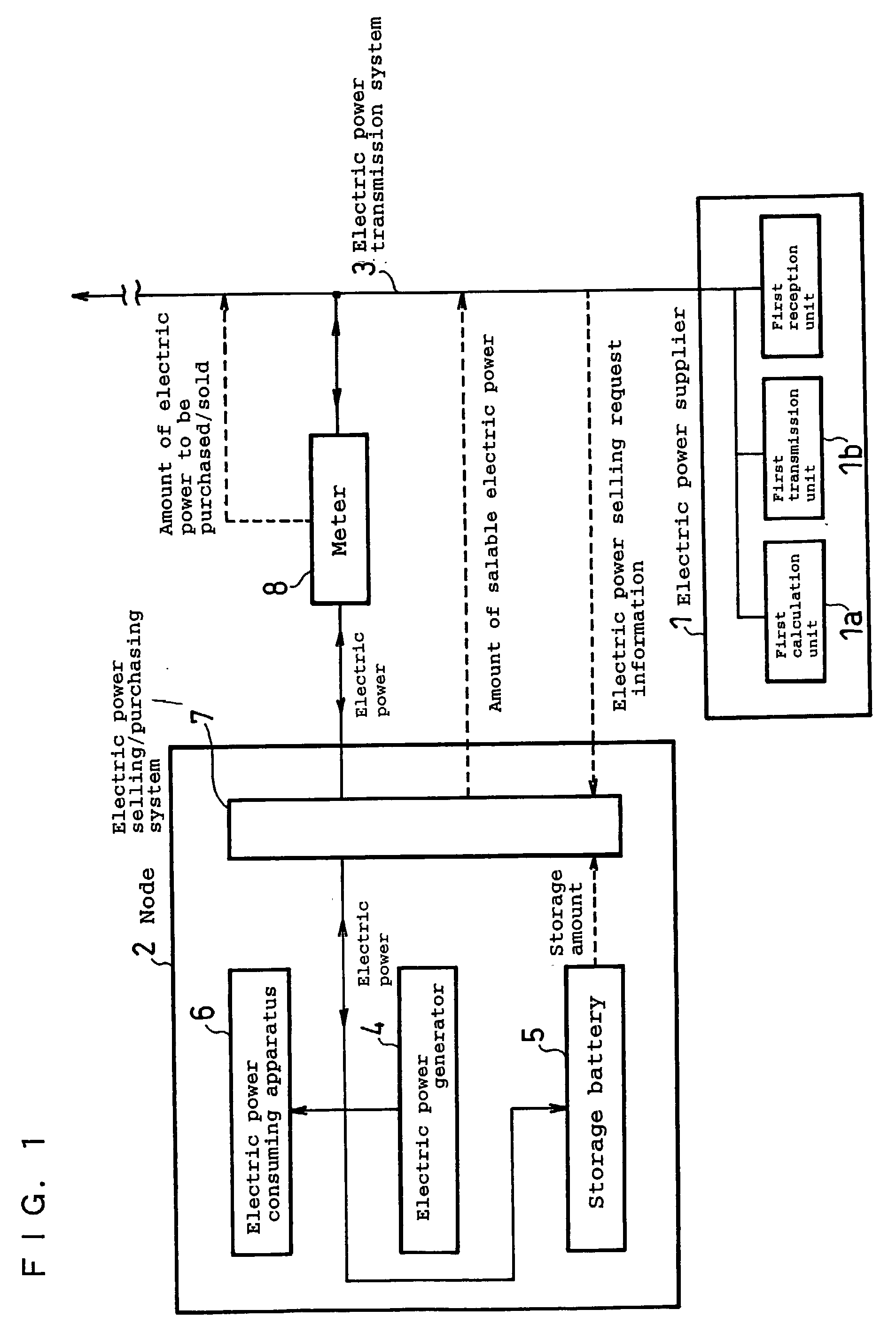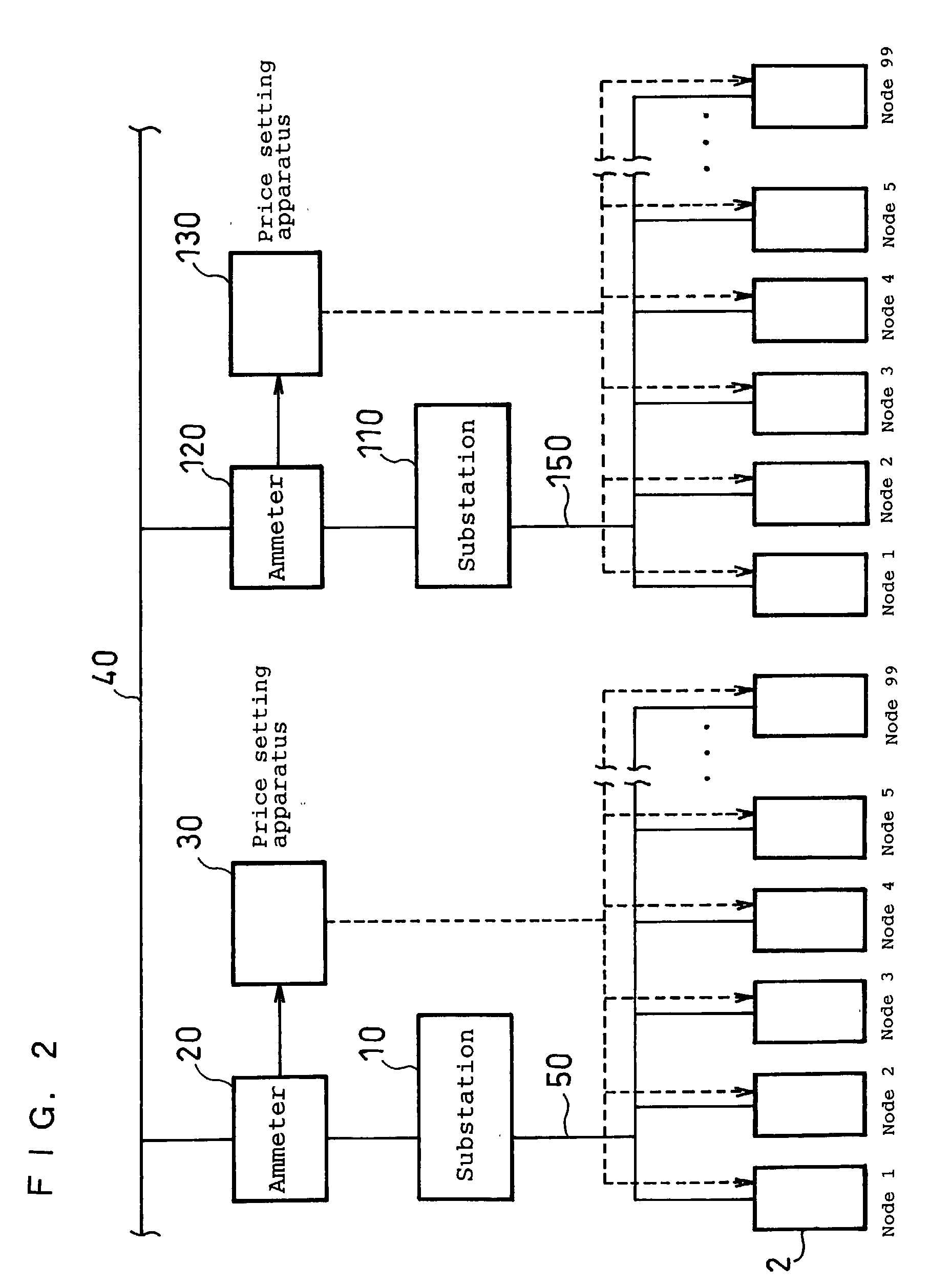Power supply/demand control system
a power supply/demand control and power supply technology, applied in process and machine control, electric devices, instruments, etc., can solve the problems of low final energy efficiency, large loss of electric power transmission from electric power stations to consumers, low energy efficiency, etc., to balance the supply and demand of electric power, and reduce the selling price of electric power
- Summary
- Abstract
- Description
- Claims
- Application Information
AI Technical Summary
Benefits of technology
Problems solved by technology
Method used
Image
Examples
example 4
[0098] FIG. 5 is a view showing the configuration of an electric power supply and demand management system in accordance with Embodiment 4 of the present invention. Embodiment 4 shown in FIG. 5 is the same as Embodiment 1 in that each node has electric power consuming apparatuses, an electric power generator and a storage battery, but different in that the operation of the electric power selling / purchasing system is determined depending on voltage by using the fact that the voltage changes depending on electric power supply and demand situation. In other words, the voltage lowers when electricity is supplied to a nearby node via the transmission lines, and the voltage rises when electricity is supplied reversely; hence, electric power may be sold when the voltage is low, and electric power may be prevented from being sold when the voltage is high.
[0099] More specifically, the electric power selling / purchasing system 7 determines as to whether electric power is sold or not depending ...
embodiment 5
[0103] Embodiment 5
[0104] FIG. 7 is a view showing the configuration of an electric power supply and demand management system in accordance with Embodiment 5 of the present invention. In the electric power supply and demand management system of this embodiment, twp nodes 101 and 201 are included in one group. In FIG. 7, a fuel cell 104 and a fuel cell 204 used as electric power generators are shown separately from the node 101 and the node 201, respectively, for the sake of convenience; however, they are included in the node 101 and the node 201, respectively, actually.
[0105] Furthermore, when the amounts of electric power consumption at the nodes are measured by electric power distribution boards 102 and 202, respectively, as shown in FIG. 7, an electric power consuming apparatus, which receives electric power supplied from the corresponding distribution board, or a set of such electric power consuming apparatuses becomes a node; this is advantageous in that the amounts of electric...
embodiment 6
[0123] Embodiment 6
[0124] The above Embodiment 5 in accordance with the present invention can be attained with the use of circuits; however, the present invention can also be attained with the use of a CPU, memory and peripheral circuits. In this case, the flowchart of a program for determining the operation of the CPU is shown in FIG. 9. Step 1 is to realize the storage means 301, step 2 is to realize the predicting means 302, step 3 is to realize the supplied amount determining means 303, and step 4 is to realize the supply control means 304. These steps are not always required to be carried out in the above order. Furthermore, operation is carried out at intervals of 10 minutes in FIG. 9; however, the operation may be carried out at intervals other than 10 minutes, and the operation may be carried out at intervals different from one another.
[0125] For example, step 1 to step 4 may be carried out as four processes independent from one another. In other words, process 1 and process...
PUM
 Login to View More
Login to View More Abstract
Description
Claims
Application Information
 Login to View More
Login to View More - R&D
- Intellectual Property
- Life Sciences
- Materials
- Tech Scout
- Unparalleled Data Quality
- Higher Quality Content
- 60% Fewer Hallucinations
Browse by: Latest US Patents, China's latest patents, Technical Efficacy Thesaurus, Application Domain, Technology Topic, Popular Technical Reports.
© 2025 PatSnap. All rights reserved.Legal|Privacy policy|Modern Slavery Act Transparency Statement|Sitemap|About US| Contact US: help@patsnap.com



